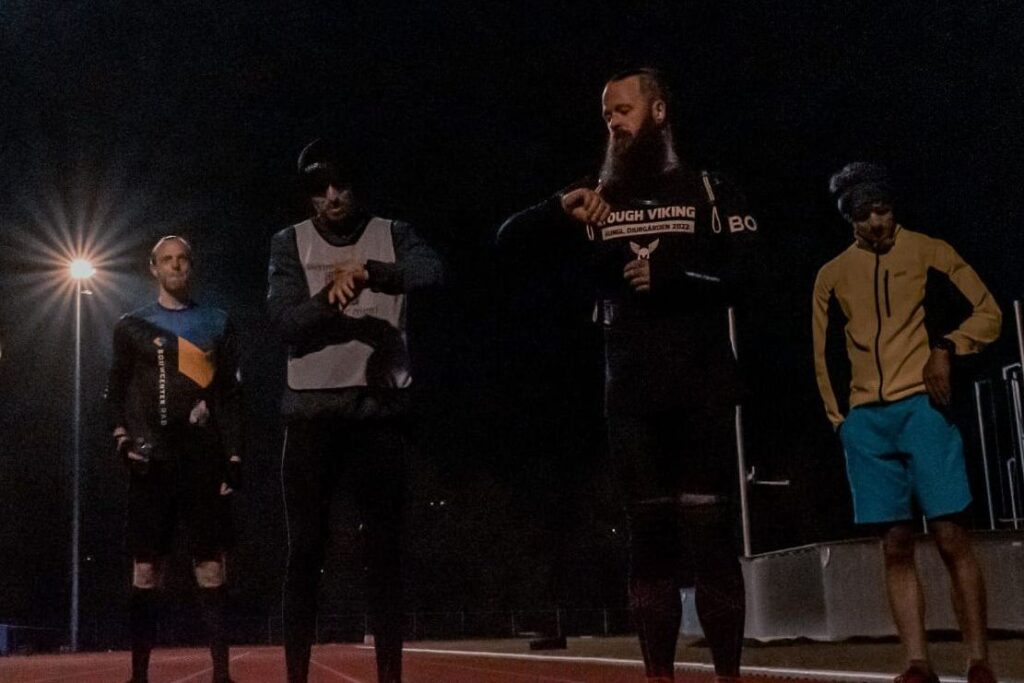
The people that surround you influence the way you think. After hearing this phrase for the first time, I’ve seen it play out in my own life and I realize the immense importance. I’m grateful that my own thought patterns and even actions have changed because of others. The examples are easiest to see in training, so let’s start there.
Recently I visited Rob, an accomplished ultra-runner with decades of experience who happened to live nearby. A mutual contact connected us and we spent a lovely afternoon. He shared all sorts of stories and photos of his accomplishments, making me feel like a novice in all aspects. After winning prizes on the short distances, Rob had switched to marathons. His memorabilia displayed finish times far exceeding my fastest marathon. Later he had started running multi-day ultramarathons across the globe. He had traversed the desert in the Marathon des Sables, weathered tropical heat in central America and raced at high altitude in the Himalayas. He had overcome heat and monotony on the salt plains and a frozen retina while running on one of the poles. This man had finished runs magnitudes harder than what I had dared to dream of so far.
I came home inspired. The way this man talked about limits and fear was different. He was so confident of what you can achieve if you prepare diligently. I realized that I had never dreamed this big when it came to running, and he unconsciously taught me to question my own perceived limits. I felt that the company of that afternoon had broken a thought pattern. And reflecting on this, I saw this had happened before.
After my first marathon I stumbled upon a podcast that introduced me to the concept of ultramarathons. Reading more about it changed my beliefs that a marathon was about the absolute maximum for a human to run. A few months later I ran beyond the marathon-boundary myself, and this gave me the courage to sign up for my first ultramarathon event. When the time had come I nervously arrived on the island of the race, hoping to just survive the ordeal. But my roomie said she aimed to win a prize, and then went ahead and did exactly that. It had never even occurred to me to think with such ambition. Again, a thought pattern was shattered and limits got reconsidered. Less than a year later I adopted the goal for 2023 to finish on the podium in one or more ultras myself, and this dream has already come true in one race.

The same happened after reconnecting with an old friend who turned out to have become an ironman. He talked me into joining a local cycling group on their weekly ride. As a very mediocre cyclist I was a bit scared by the prospect of trying to keep up with a 30km/h-group. But I survived, met some people with inspiring stories and came home energized. Their stories made me rethink the validity of my own perceived limits, until at the end of that training season I could keep up with the 35km/h-group, something that had been unfathomable before.
I guess the pattern is clear by now: people who think bigger than me disrupt my own thoughts, changing my actions and leading me to grow. A very direct and visible effect. Meeting likeminded people was one of my motivators for participating in ultras, and the results keep paying dividends. The people you meet there think big in a contagious way. I think a lot about the quote ‘you are the average of the 5 people you spend the most time with’. It’s often used in the world of entrepreneurialism or self-development. The statement can be debated, but the core is undeniably true: our brains internalize the thoughts we repeatedly expose ourselves to. Whether positive or negative, things we hear others say very often start to feel normal after some time, until we unconsciously repeat them in our own head and make them our own truths. The energy and viewpoints we surround ourselves with are contagious.

Once you’re aware of this process, you can use it to your benefit. What people do you spend the most time with? Do their thoughts lift you up or do they focus on limits? It seems trivial, but this shapes an integral part of who you are. Not only can you choose to influence this, but I’d go as far as to say you even have a responsibility to yourself to be cautious of the thoughts surrounding you. Are the stories of your neighbors or co-workers in line with how you want to approach the world? Are their words empowering or self-limiting? Are there any opportunities for you to slightly break the existing patterns, like swapping the environment of an occasional coffee break for some more uplifting company? Or maybe you can meet that one friend more often who always gets you to dream. If changing company is hard, another approach could be listening to inspiring interviews during commutes or chores. It feels strange to admit, but I’ve spent hundreds of breakfasts listening to inspiring podcasts in the past years. The podcast hosts don’t even know me, but they’ve changed my internal dialogue time and again. This way I take a little bit of control of my own self talk.
If you take stock of the thoughts and ideas you’re exposed to every day, do you find any recurring influences that you’d rather not rent any space in your head (let alone for free)? What words are repeated by the tapes playing in your head, and do they align with the conversation you want to have with yourself? How do you see yourself, and is that an image you want to keep feeding? Your thoughts are precious. The people around you influence your thought patterns, so make sure to be in the company of empowering words. The story you tell yourself is too important to be written by others without your permission.

Leave a Reply